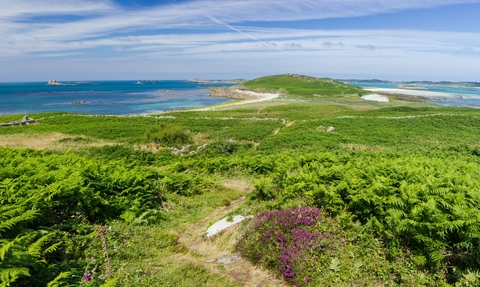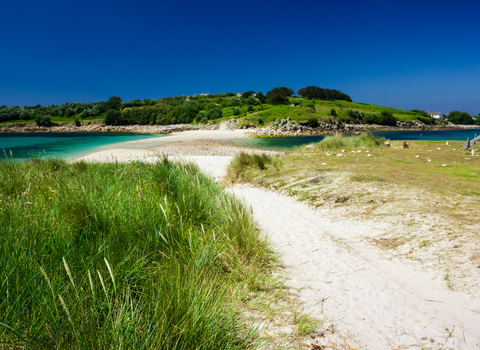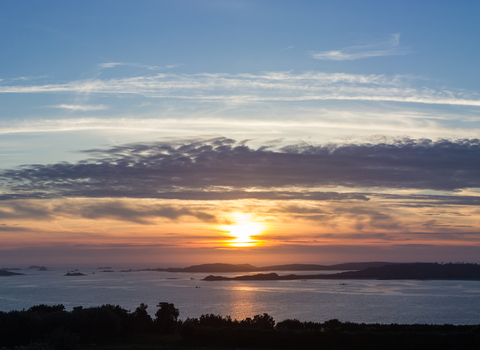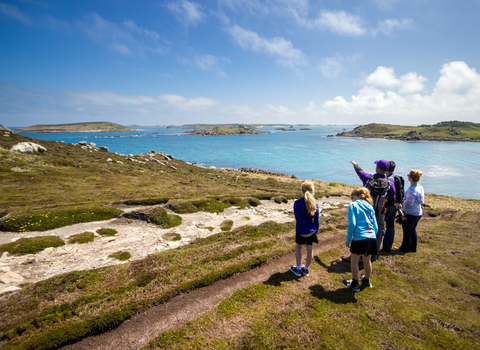
Samson (c) Ed Marshall
Samson
Explore the closest uninhabited island
Overlooking the south end of Bryher, the uninhabited island of Samson is easily recognisable by the rise of its two hills separated by a sandy neck. The island is important for breeding seabirds, such as gulls and fulmars, and is also home to interesting species of plants, making it considerably important botanically.
Situated southwest of Bryher, the whole of Samson is designated as a SSSI, including the nearby small islands of Puffin Island, Stony Island, Green Island and White Island. It is dominated by two granite hills, separated by a narrow neck of vegetated sand and shingle.
Upon landing on the north eastly sandbank, a colony of pyramid orchids may be seen growing in the dunes. They are fairly large flower that is bright pink in colour and cone-shaped, growing upright out of the grass. Another species found here is the lesser skullcap, which grows in the damp areas of the island, such as near the old Southward Well.
At the summits of both hills, where the vegetation is exposed to south-west prevailing winds, creating ‘waved’ maritime heath dominated by heather and bell heather. This heathland is interspersed with dense stands of bracken and bramble where early Neolithic settlers disrupted the soil to construct several Neolithic tumuli. This scrub descends holds good populations of bluebell in spring, along with red campion and the nationally rare balm-leaved figwort.
Interestingly, some of the vegetation on Samson reflects the long period of human occupation up until 1855, particularly on South Hill will you will find specimens of tamarisk, elder and primrose. Samson and the surrounding small islands are particularly important for their breeding seabirds. The colony of lesser black-backed gull on South Hill is of national importance and is also one of the largest colonies of this species on Scilly.



